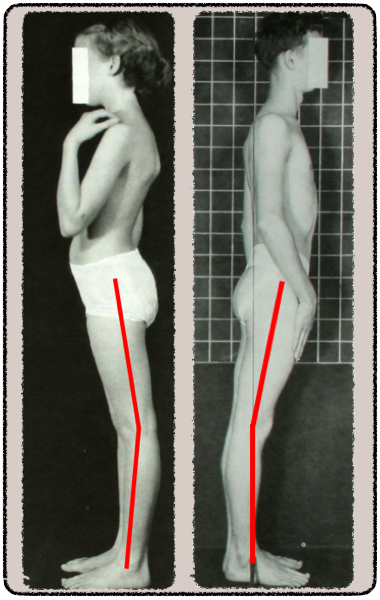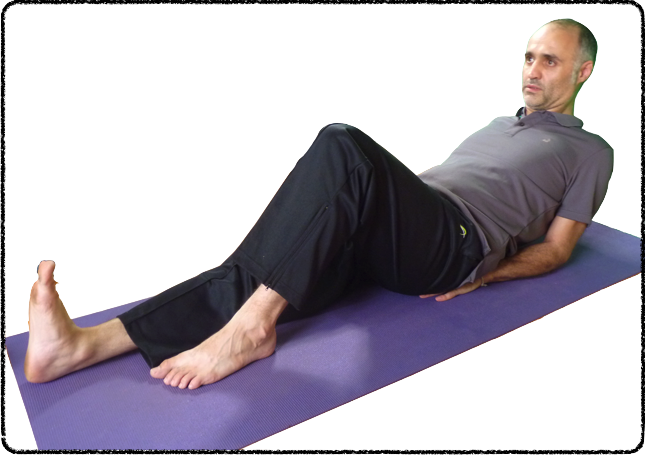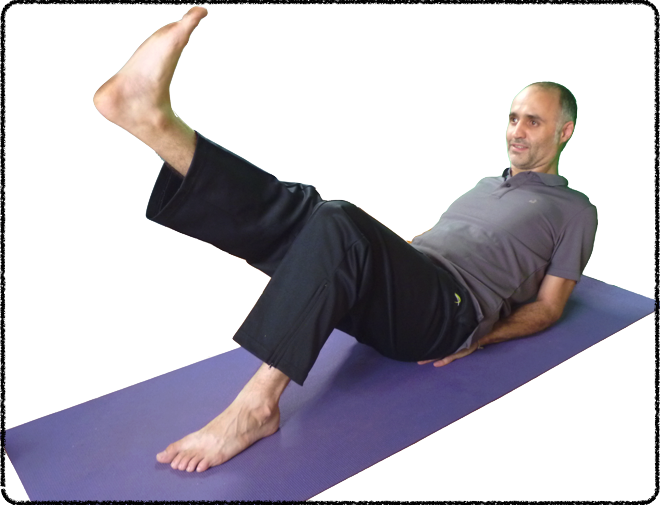What’s the best stretch for hamstrings?
Well, quite simply, there isn’t one. You’re probably wondering how that can be, but before we get to that, let’s take a look at the question itself.
If you’re familiar with the work of Dr John Demartini, you’ll know that as well as being a real inspiration and pleasure to listen to and learn from, he’s a big advocate of asking quality questions.
In fact, one of the phrases he uses quite often when he’s teaching and giving talks is:
More...
That whole phrase has inspired me over the years and one of the main things I’ve taken from it and applied to working with clients in pain, as well as applying to my own life, is to ask better questions. When we ask better questions, we get better answers. Okay, so what’s that got to with the best stretch for hamstrings? It’s got everything to do with it. If you’ve ever searched for the best stretch for hamstrings or have ever noticed that your hamstrings are tight as you bend forward, for example, then you could be forgiven for thinking that the tightness you feel is the actual problem. If tight hamstrings are the problem, then it makes sense to ask the question “What’s the best stretch for hamstrings?”, or something similar. But what if you ask a different question? What if you ask something along the lines of “What’s happening in my body that’s causing my hamstrings to feel so tight, so often?” Do you see how that question might lead to a different answer, and how the answer it leads you to might also lead you to a better outcome? You see, my experience, time and time again, has been that when a person has tight hamstrings, the tight hamstrings are not the problem. As with any kind of symptom, they sure do feel like the problem, because that’s where it hurts, or that’s where you feel the pull when you bend forward. But in actuality, the tight hamstrings – or the back pain, knee pain or hip pain – are just symptoms of the actual problem. And that’s where so many other treatment modalities that we’re familiar with have been going wrong for so many years. They’ve been chasing the symptom instead of taking a step back to look at the bigger picture and to see what else is going on in your body that’s *driving* the symptom in the first place.
Understanding Why Your Hamstrings Feel Tight
You see, if your hamstrings do feel tight, then you can bet your bottom dollar that they are tight for a very good reason. Your body doesn’t do anything without a very good reason! If your hamstrings feel tight, then we need to understand what other part of your body isn’t functioning at its optimal level and, therefore, is needing help from your hamstrings, causing them to feel tight. There are several possibilities for the feeling of tight hamstrings, one of which is: Have they been assisting with hip extension, because your Glutes have ceased being the prime movers? Your Glutes are your butt muscles and the big Glute (Gluteus Maximus) is supposed to be the “prime mover” for hip extension. When you walk and your leg goes behind you, that is what’s known as ‘hip extension’. Conversely, when you bring your leg forward in front of you, that is hip flexion. But if, for whatever reason, your prime hip extensors aren’t functioning as they are supposed to function, then how is your body going to perform the act of hip extension? Well, the two most common ways I see is either for the hamstrings to compensate for the movement (they’re only supposed to assist with the movement, not be the prime mover). Or the other common compensation pattern that can occur is for your lower back to do most of the work. It’s not so much that your lower back moves your hip into extension, but more that, because your hip doesn’t really go into proper extension, your lower back compensates in its movement pattern to imitate what needs to happen. Lower back pain anyone? So you see, if we ask the question “what’s the best stretch for hamstrings?”, then you may find one stretch that works better than another stretch for you, but are you addressing the reason for the tightness? Maybe, maybe not. It depends on what’s going on in your body and why you are ‘stretching’ your hamstrings (although the whole concept of ‘stretching’ is somewhat a misnomer, which is the topic of another discussion).
Finding The Best Stretch For Hamstrings . . . For You
Now, before we look at some ways of testing what’s going on in your body to get a better idea of what it needs, there’s one other point that needs to be addressed with regard to the feeling of tight hamstrings. I emphasise that point because it’s not uncommon for a person to report that their hamstrings are “tight” when in fact they are actually “taut”. So what’s the difference? Well, there’s actually a huge difference and if your hamstrings are tight, then exercises that look to bring about knee extension (and, therefore, a stretch of the hamstrings) are indicated. But if your hamstrings are actually “taut” then, by definition, they are already in an elongated position and the most they will need is a release, but not a stretch. What is ‘taut’ then? Well, quite simply, if you hold a rubber band between both hands and pull it so it is quite stretched and then you have someone flick it with their finger, it will kind of “ping”. And the reason it pings is because it is being held “taut”. But notice that while it is being held taut, it is also very much elongated too. You wouldn’t want to stretch it to relieve the tight feeling, would you? Instead you would want to release the hold on it so it can find its neutral resting length and tension.
How To Determine If Your Hamstrings Are Tight Or Taut
The easiest way to do this isn’t some fancy test or high tech piece of equipment … the easiest way to do this is to look! The images below are taken from one of the industry standard textbooks on posture and corrective exercise: Muscles, Testing & Function by Kendall et al.
The first image on the left shows a shows a 10 year old girl with hyperextended knees and the second image on the right shows a man with the same postural deviation. Both of these people may complain of a “tight feeling on the back of their thighs” (their hamstrings), but what’s really happening is that their hamstrings are “taut”. If you haven’t paid attention to similar, yet different, bodily sensations, then it’s very easy to confuse the two. But you can (hopefully) clearly see that their knees go back too far – beyond normal range – into what is known as hyperextension, and as they do so, they will pull the hamstring muscles taut. Get someone to take a set of photos of you and have a look at the alignment of your own legs and knees. If you have hyperextended knees, then I would encourage you to stop looking for the best stretch for hamstrings and instead start looking at other things. Without seeing you and knowing what’s going on in your body, I can’t say for sure what your body needs. But a couple of suggestions would be to start incorporating exercises that – believe it or not – engage/activate your hamstrings; and the other area I would be interested in looking at if you were my client is your primary hip flexors. Just to emphasise, though, there’s quite a bit more to correcting alignment, function and movement patterns than just doing random exercises here and there. Best results are achieved by doing properly selected and sequenced corrective exercises. The sequencing of the exercises is very important.
What If You Don’t Have Hyperextended Knees?
So if you don’t have hyperextended knees, then you would quite possibly benefit from some kind of hamstring ‘stretch’. But remember what was said earlier: we don’t want to stretch the hamstrings for stretching sake; we want to look at what else is going on in your body and take the overall picture into account. For example, is your pelvis in a neutral position, or is it tilting forwards (anterior tilt) or is it tilting backwards (posterior tilt)? Knowing this information then helps with exercise selection because we can look to put you into a position that asks for knee extension (thus ‘stretching’ your hamstrings) while affecting the position of your pelvis, as well as the position of your torso. Remember, the various parts of your body don’t work in isolation but instead work together in highly organized and integrated movement patterns. Find the movement pattern that your body isn’t doing efficiently and then have you perform that pattern for a series of X amount of repetitions, and you will not only get your hamstrings to release, but you’ll also feel your upper back come into better extension and a host of other beneficial changes too.
Is This The Best Stretch For Hamstrings?
Well, as I said right at the very beginning of this article, there isn’t a ”best stretch’ for the hamstrings, because it depends on what else is happening in your body. Having said that, go ahead and give this exercise a go and notice what happens in your body while you perform the movement. Then notice what feels different once you stand up again.
Finding The Benchmark of Your Hamstrings
- Stand with your feet hip width apart and facing straight
- Then bend forward to take your hand stowards the floor, only as far as you can comfortably go without forcing it
- Do not bounce!
- Make a note of how far you can go, both where you see your hands reach to and what you feel in your body
- Then come up slowly and do the following exercise
Supine Leg Raises
- Lie on your back with your feet and knees hip width apart and your feet slightly turned in so they are slightly pigeon toed
- Have your knees bent to about a 90 degree angle
- Place your hands palms down under your buttocks and prop yourself up on your elbows and look straight ahead
- Now straighten one leg while keeping the knee on the other leg bent and the foot flat on the floor
- Tighten the thigh of the straight leg and pull your toes back towards your body
- Hold this tightness and begin lifting and lowering the straight leg from the floor so that it comes up level with the thigh on the bent leg
- Then lower it back down to the ground and repeat
- Keep your upper body relaxed and remember to breathe!
- Repeat for 10 repetitions and then switch sides and do the same on the opposite leg
- Remember to keep your thigh on the straight leg tight/contracted and the foot pulled back the entire time
- When you have completed 1 set of 10 repetitions on each leg, repeat the whole cycle again, so you complete 3 sets of 10 reps, alternating legs each time
Now repeat the hands to the floor test. What feels different? You should notice that you feel looser and more flexible and the tightness in your hamstrings has reduced. So how can that be when you didn’t actually stretch them? Well, there was an element of ‘stretch’ with the tightening of your thigh muscles, but ultimately, the reason you feel looser is for several reasons:
- You utilized something known as ‘Reciprocal Inhibition’, which basically means opposing muscle groups can’t be in a contracted state at the same time.By contracting your thigh muscles as your raise and lower your leg, your hamstrings have to ‘let go’ because they are the muscles that oppose your Quads (thigh muscles)
- The entire motion of raising and lowering your leg calls on the entire chain of muscles to work together in unison . . . which is precisely how your body works all day, every day.
Remember, your body doesn’t understand individual muscle isolation; it understands movement patterns and you just reminded your lower body and the entire kinetic chain of a proper movement pattern.Once you remind your body of proper movement patterns, it knows what to do from there and will bring you back to better balance - The activity of raising your leg while being propped up like this also called on your primary hip flexors to engage properly, and that too will create a chain reaction throughout your bodyThere are literally dozens of ways we can ‘stretch your hamstrings’ and sometimes it doesn’t require a ‘stretch’ at all, but proper muscle engagement throughout the entire chain




